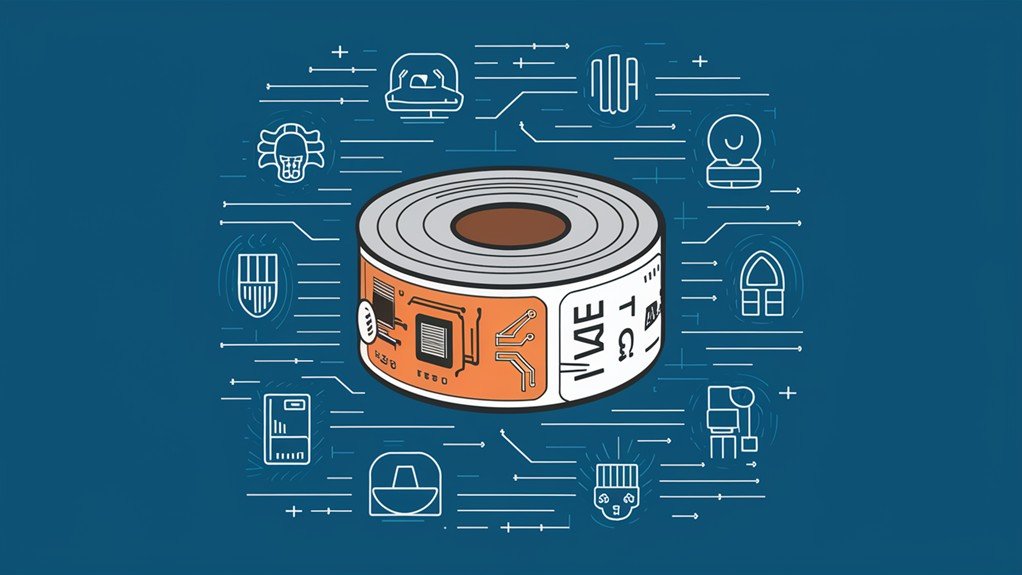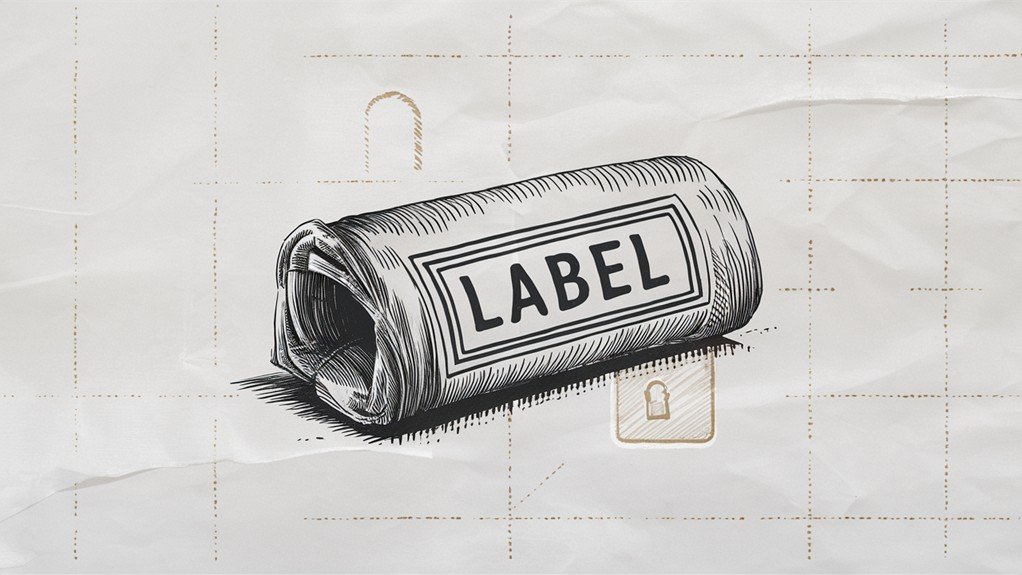You're seeking a thorough guide to label roll standards, and understanding the complexities of specifications is vital for ensuring seamless printing operations, avoiding costly mistakes, and maintaining high-quality labels that meet your unique application requirements. From printer technologies like inkjet, thermal, and direct thermal to label materials and compatibility, sensing technologies, ordering necessities, and protection/privacy considerations, each aspect plays a significant role in the labeling process. By grasping these specifications, you'll be able to navigate the intricacies of label roll standards, optimize your printing operations, and make informed decisions that drive success – and there's more to investigate ahead.
Printer Technologies and Types
Regarding printing pre-cut labels, you're likely to encounter two main technologies: Inkjet and Thermal. Each uses different methods for creating images on the labels.
Inkjet printers utilize aqueous ink in either dye or pigment formats, achieving high resolutions up to 1,440 x 720 DPI with droplet sizes typically ranging from 50 to 60 microns. This makes them suitable for applications requiring high-quality images.
Thermal printers, conversely, operate using heat either directly on heat-sensitive materials (direct thermal) or with ribbons (thermal transfer). They offer durability for diverse applications.
Direct thermal printing is cost-effective for short-life applications like barcode and address labels, as it requires no ink, toner, or ribbons. Thermal transfer printing allows for color options and produces more durable images.
It's crucial to understand the differences between these technologies to select the right printer for your specific labeling needs. By doing so, you can guarantee high-quality prints and optimal performance.
Label Materials and Compatibility
Compatibility is also essential regarding thermal printers. You must verify that the labels you choose are suitable for your specific thermal printer model to avoid printing issues.
Furthermore, the core size of your label roll must match the specifications of your printer, with common core sizes including 25mm, 38mm, 44.5mm, and 76mm.
Proper label material selection can greatly impact print quality, durability, and adhesion, which are fundamental for the label's performance in different applications.
Sensing Technologies and Detection

You rely on varied sensors to accurately detect labels in your printing process. These sensors play a critical role in ensuring efficient and precise label production.
To cater to different label characteristics, distinct types of sensors are employed, each with unique detection capabilities.
- Optical/Photoelectric Sensors: Detect light changes, with detection modes like Beam Break and Beam Make, sensitive to small variations in the light path.
- Capacitive Sensors: Effective for detecting changes in thickness, suitable for use with clear labels on clear liners, improving detection accuracy.
- Gap Sensors: Improve contrast for better label detection but require larger gaps between labels for effective operation, necessitating precise cutting tools for feature creation.
- Slot and Notch Sensors: Operate likewise to gap sensors, improving contrast for better label detection.
- Ultrasonic Sensors: Utilize high-frequency sound waves for detection, less impacted by metallic materials, making them suitable for an array of labeling applications.
Ordering and User Experience Essentials
With thousands of label shapes, sizes, and materials at your fingertips, ordering plain and printed labels has never been easier. You can efficiently filter compatible products for Direct Thermal and Thermal Transfer printers using a specific search function on the ordering platform. This allows you to quickly find the perfect labels for your printing needs.
When you need more information, online resources are readily available. You can access product data sheets, user manuals, and customer care support to get the crucial details you need for troubleshooting and specifications.
Plus, you can manage your account, recover passwords, and opt-in for newsletters if you're a registered user. Guest checkout is likewise an option, eliminating the need to create an account.
To improve your website experience, vital and analytics cookies are utilized. You have the option to manage your cookie preferences, giving you control over your online experience.
With these features, you can focus on finding the perfect labels for your business, making the ordering process seamless and efficient.
Label Roll Protection and Privacy

To achieve this, you should use appropriate materials and packing techniques that minimize movement and abrasion. This greatly reduces the risk of damage to sensitive labels during transit.
When ordering label rolls online, you should likewise be aware of privacy management practices. These include cookie management, which involves crucial cookies for website functionality and analytics cookies that collect anonymous user interaction data to improve your experience.
Note that blocking certain cookies may affect service availability.
- Use sturdy packaging materials to prevent label movement during transit
- Confirm proper labeling and handling of label rolls during shipping
- Choose a reliable shipping method with tracking and insurance
- Be aware of cookie management practices when ordering online
- Review website policies on data collection and usage
Core Specifications and Printer Compatibility
As you guarantee the safe transport and handling of your label rolls, attention turns to the vital matter of core specifications and printer compatibility.
The core size is pivotal for label compatibility with printers, and using the incorrect size can result in return and rewinding charges. Common core sizes include 25.4mm, 38.1mm, 44.45mm, and 76.2mm, but printers typically require either 2-inch or 3-inch core sizes.
Verify that the selected core size matches your printer's requirements to ascertain proper fitting. You can find this information in the printer specifications.
If your printer doesn't directly support the desired core size, you may need additional adaptors. Consult your printer manual for compatibility details.
It's important to confirm the core size aligns with your label application equipment for smooth functioning of label applicators and comprehensive operations.
Frequently Asked Questions
What Is a Label Specification?
You're looking for a label specification, which outlines the critical dimensions, materials, and printing requirements for a label, ensuring it's compatible with your printers and applications, and meets your operational needs.
What Are the Standards for Label Printing?
You need to contemplate label printing standards, including media print width, core size, and roll diameter, which vary by printer type, in addition to facestock material and adhesive type, to guarantee compatibility and quality.
How Do You Calculate Roll Labels?
You calculate roll labels by determining the complete diameter, factoring in core size, material thickness, and total labels, then dividing the material length by individual label length, considering gaps, to get the correct number of labels per roll.
What Is the Difference Between a Roll Label and a Sheet Label?
You're probably wondering what sets roll labels apart from sheet labels. Well, roll labels are wound on a core, ideal for high-volume printing, while sheet labels are flat and perfect for smaller runs in standard office printers.